Mon, 16 Mar 2015 . Last updated Thu, 25 Jun 2015 09:02


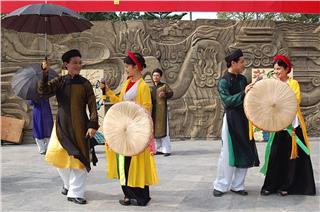
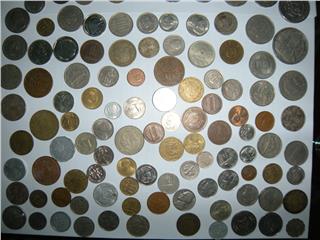
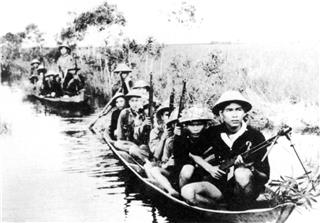
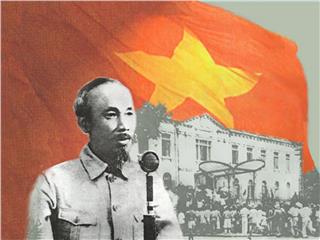
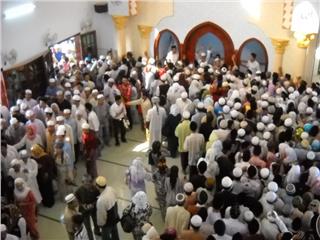

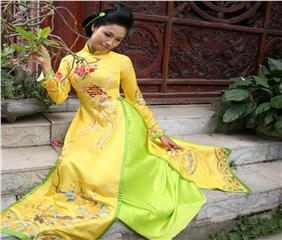
These sheaves of rice were cut in the last harvest in October and then after the New Year’s Eve they will be used in a ceremony to call back the soul of the buffalo. This woman regards this as a way to repay the loyal animal for its hard work during the past year. The gong sound echoes like sending wishes of peace and prosperity of the Muong ethnic people here. Traditionally, any spring festival must feature a dance performance praising the thousand –year – old banian tree in the village.
After that they will go to the stream to take water to offer to the ancestors and then pour the water into a jar for daily use. Muong people believe that this sacred water will bring good luck to them. However the most impressive thing during the traditional Tet of the Muong people who live on the foot of Tan Vien Mountain is “sac bua” ceremony on the Eve.
According to the traditional concept of Muong people, The New Year does not start from the Kitchen God festival but from 27 December in lunar calendar. From this day, the village seems busier than usual. Today Luan‘s family is going to make a new cooking fire. This work rwquires skills and knowledge about tradition.
The new cooking fire starts burning and all the family members are busy preparing for the New Year. Each person is responsible for a task. This assignment has become a rule in the family. One cuts pork, one wraps “chung” cakes, one kneads flour to make “cheo kheo” cakes… “Cheo kheo” cakes are symbols of deep love of Muong couples in spring. Perhaps because they are long and folded double, they are called “cheo kheo”?
The Muong people have a saying: “Steamed sticky rice, stream water. House on stilts, roasted pigs. Day goes, month comes.” It is for that reason that the food for the New Year of the Muong people here are very simple with boiled meat and sticky rice laid on a banana leaf. The Tet atmosphere is seen from the day when local people prepare the banquet on leave. The cozy atmosphere of family union and hope spreads in the house.
On the 27 day of December in lunar calendar, Muong people decorate the ancestral altar. This work requires respect and must be done by the house owner. The incense burner, tablet, compote, flower base, Lunar New Year pole…Depending on their economy, they can buy all these things or some of these. However, despite richness or poorverty, all the families have an ancestral altar.
For the Muong people, worshipping ancestor and the village’s tutelary gods in the Lunar New Year is the most important thing. Luan does everything carefully, particularly cleaning the area around Turle God banian tree. He knows better than anyone that what he does not simply to beautify the village landscape but to keep a cultural and historical witness of the village.
For the Muong people, in “mo” works on Chim Ay and Cai Ua, the banian tree serves as the support for vitality. The people in Rua village have passed the legend about De Giang to explain the origin of the Muong people: In the past in Muong land stood a cave called Cong Tieng. There a hawk laid an egg that then broke into a Vua. The Vua flew throughout villages of the Muong village and then perched onto a banian tree. Since then, the Muong village became crowded and busy. The Muong people had houses, food, wine and jewelry.
Luan feels very proud when he keeps the monument related to the source of the villagers. The banian tree and Rua village communal house were located on the path of ancient Muong people to conquer the plains in their migration from Muong Bi, Luong Son to the Red River Delta. The banian tree is now one of the biggest and most beautiful banian trees in Vietnam. With its imposing height, the banian tree is considered to be an impressive landmark on the Ba Vi Peak. Its trunk is surrounded by 9 main roots and dozens of small ones, which grow deep into the ground, forming a firm support.
Though the tree is now more than thousand years old, it still procedures a lot of shoots and young roots. It demonstrates the strong vitality of this sacred tree. In 2010, the banian tree was recognized by Vietnam Association for Conservation of Nature and Environment as heritage tree of Vietnam. The local people regard it as the treasure of the village as it is closely associated with their history, culture and spirituality.
The last work of the old year is also done. The important transitional moment to the New Year has come. At the beginning of the New Year, Muong people perform worship rituals to the ancestors and gods. In the New Year’s Eve, Kinh people often gather together with their beloved people. Muong people often welcome a shaman. Luan went to invite this shaman half a month ago. According to the rules and customs of the Muong people, all the important rituals must be conducted by the shaman in the village.
Sac Bua ceremony, also called Xec Bua ceremony, is a festive activity with traditional games of Muong people in Hoa Binh. For the locals in Rua village, this is a very important ceremony. In the past, only rich families in the village could have “sac bua”. In the New Year, a family visited by the “sac bua” troupe will meet good luck.
The house owner and “sac bua” troupe say congratulations and wishes for a new year full of health and happiness. Luan has thought a lot of holding “sac bua” ceremony for this Tet as the gift for the “sac bua” troupe is costly. However, it is an occasion for the family member to gather. He often says that to his wife.
The buffalo is an important asset of a Muong family, like Kinh people. Therefore, in the morning of the first day of the New Year, the buffalo will be fed before the family members enjoy new rice. As Muong people believe, the buffalo must eat first as it has worked hard all year round and they have to work early in the New Year. Apart from the buffalo, such farming tols as plows, hoes, knives, sickles can also celebrate Tet with the owners.
The water well is said to be built at the same time with the thousand-year-old banian. It turns out that when individual cultural relics are placed next to each other in a sacred context, the culture that they contain is shown clearly. Kinh and Muong people are brother in the big family of Vietnamese people. And the three symbols of an ancient Vietnamese village in the middle of the Muong village at the foot of Tan Vien Mountain may be important witness for the culturologists, especially when Rua village is located on the road that the old Muong Bi, Muong Vang people took to come down the mountain to grow rice and set up villages.
The spring festival is the biggest and most expecting festival of the year in Rua village. And perhaps for this reason, all the unique cultural elements are expressed in a natural way, full of excitement. The main ceremonial part is for worshipping Tan Vien Saint, Tutelary God and other gods. It is held first and solemnly. Unlike many Muong other villages, in Rua village, women are allowed to participate in ceremonies at the communal house.
Luan says only one family in the village can say these prayers. And these prayers have been handed down from generation to generation for centuries. People often wear their most beautiful clothes to go out in the New Year. Today, the Muong girls are even more beautiful than all the blooming flowers. The gong sound echoes like sending the desire for peace, and prosperity of the Muong people here. The gong performance of the Muong Ethnic people in Ba Vi carries profound expressiveness, describing the innermost feelings of the villagers.
Traditionally, any festival in spring must feature a dancing and singing performance to praise the ancient banian tree in the village. Each ethnic group in Vietnam has its own customs of celebrating Tet. In terms of order and customs, the Tet of Muong people is quiet similar to that of Kinh people. Only when attending a complete Tet festival of the Muong people in Rua village, can we feel deep love among the people here and their unique culture.
Source: VTC10 - NETVIET

 Đặt vé máy bay cho người Việt?
Bấm vào đây
Đặt vé máy bay cho người Việt?
Bấm vào đây
Our service uses cookies for technical, analytical and marketing purposes. See our Cookie và Privacy policies for more information. If you agree to this, just keep browsing.


